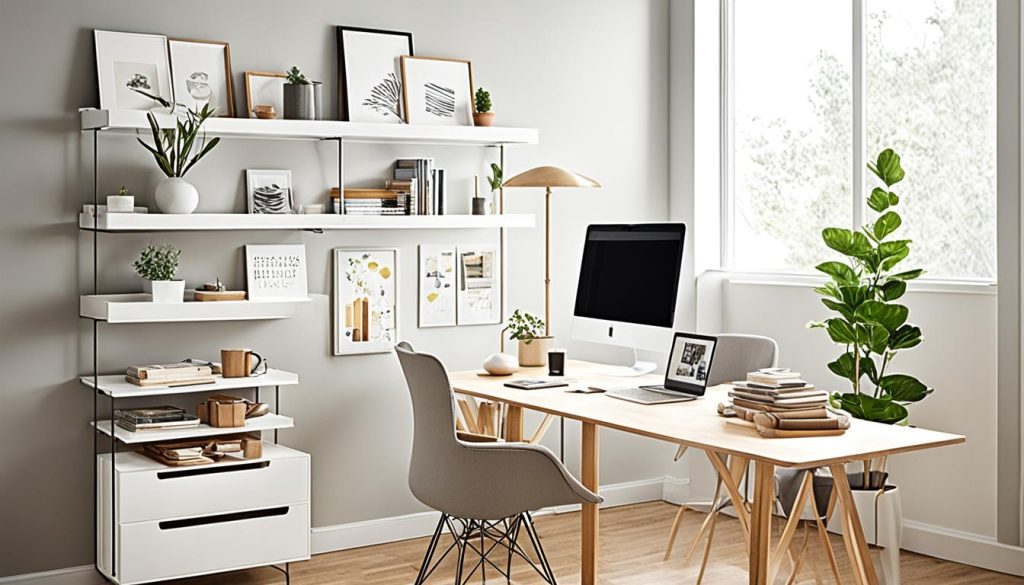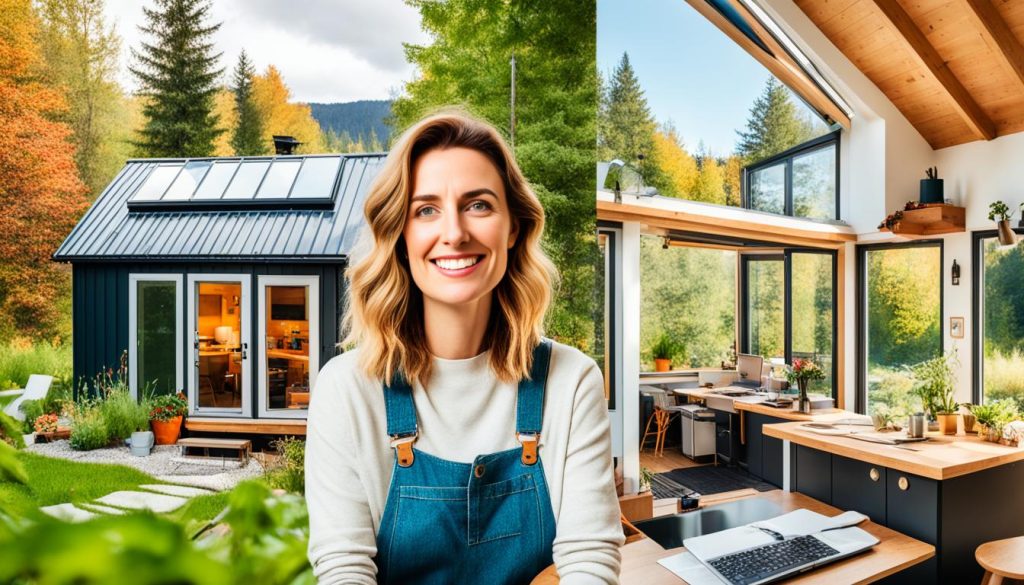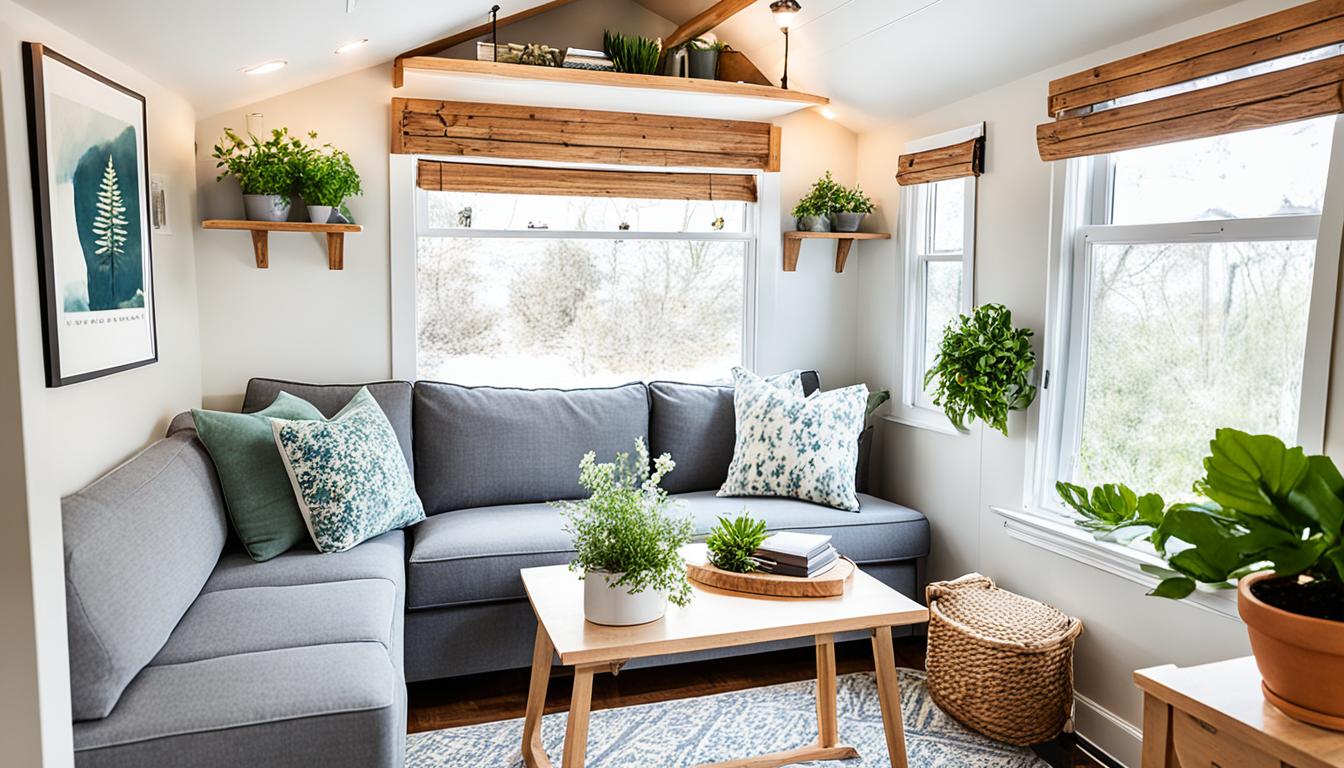Did you know that the average size of a tiny home ranges from 100 to 400 square feet? That’s less than the size of a typical master bedroom in traditional homes! Despite their compact dimensions, tiny homes have gained immense popularity in recent years, offering a unique solution for those seeking a minimalist lifestyle and sustainable living.
Millennials, in particular, are drawn to the concept of tiny homes, with 63% expressing interest in this housing option. The appeal lies in the reduced carbon footprint, lower housing expenses, and increased self-sufficiency that tiny homes provide.
Key Takeaways:
- Tiny homes range from 100 to 400 square feet in size, offering a compact living solution.
- Millennials are particularly interested in tiny homes, attracted by their environmental and financial benefits.
- Tiny homes provide reduced carbon footprint, lower housing expenses, and increased self-sufficiency.
Finding the Right Tiny House Size
When it comes to tiny homes, size matters. The dimensions of a tiny house can greatly impact its functionality, mobility, and customization options. Whether you’re looking for a cozy getaway or a practical space for your business, finding the right tiny house size is essential.
Tiny homes come in a range of sizes, from as small as 60 square feet to as large as 400 square feet. The size you choose will depend on your specific needs and lifestyle. Here are some key considerations to help you make the right decision:
- Tiny Homes on Wheels: If you value mobility and flexibility, a tiny house on wheels might be the perfect fit. These compact homes, typically between 12 and 40 feet in length, offer the freedom to travel and explore. They are ideal for individuals or couples who enjoy a nomadic lifestyle.
- Smaller Structures: For frequent travelers or those who prefer simplicity, smaller tiny homes are an excellent choice. These compact dwellings provide the essentials while maximizing efficiency. They are also easier to park and require less maintenance.
- Medium-Sized Structures: If you need more interior space for your business or additional amenities, consider a medium-sized tiny home. These structures offer more room for customization and can accommodate larger groups or families.
- Large Structures: For those with specific purposes in mind, such as office space or pop-up stores, larger tiny homes between 300 and 400 square feet are available. These structures provide ample room for creativity and versatility.
It’s important to note that when selecting a tiny house size, you should also consider local zoning regulations and building codes. Ensure that your chosen size complies with the rules and regulations in your area to avoid any legal complications.
Tiny House Size Comparison
| Tiny House Size | Typical Dimensions | Recommended For |
|---|---|---|
| Small | 60-120 square feet | Frequent travelers, minimalists |
| Medium | 120-250 square feet | Small families, business owners |
| Large | 250-400 square feet | Office space, pop-up stores |
As you can see, there is a tiny house size to suit every lifestyle. Consider your specific needs, preferences, and future plans when determining the ideal size for your tiny home. By choosing the right dimensions, you can optimize your compact living space and create a comfortable environment that meets all your requirements.
Evaluating Space Needs and Lifestyle
Before deciding on a tiny home, it is essential to evaluate your space needs and lifestyle. Consider your daily activities, hobbies, and the number of occupants. Downsizing and decluttering possessions may be necessary when transitioning to a tiny home lifestyle. It is important to ensure that a minimalist living arrangement aligns with your habits and routines. Reflect on how comfortable you will be with limited personal space and whether it suits your lifestyle.
When considering the size of your tiny home, think about the activities you enjoy and the space required for them. If you have a hobby that requires ample space, such as painting or woodworking, you may need to consider a slightly larger tiny home that can accommodate a dedicated workspace.
Additionally, think about the number of occupants in your tiny home. If you are living alone, a smaller layout may be sufficient. However, if you have a partner, children, or pets, you will need to factor in their space needs as well.
Downsizing and decluttering are essential steps when transitioning to a tiny home. Consider your belongings and prioritize what is truly necessary. Minimalist living can be liberating, but it requires letting go of unnecessary items. Remember, the goal is to create a space that is not only functional but also promotes a sense of peace and tranquility.
Take some time to reflect on your habits and routines. Consider whether you will be comfortable with limited personal space and the compact living environment. Tiny homes can offer a cozy and efficient living experience, but it’s important to make sure it aligns with your lifestyle and preferences.
By carefully evaluating your space needs and lifestyle, you can make an informed decision when choosing the right tiny home size and embark on a fulfilling journey of compact living.

Financial Considerations and Environmental Impact
When considering tiny homes, financial considerations and the environmental impact are crucial factors to evaluate. Tiny homes offer significant cost savings compared to traditional houses, making them an appealing option for those seeking affordable housing solutions. Despite variations in initial investment, the reduced mortgage payments and utility bills associated with tiny homes result in long-term financial benefits.
However, it’s important to consider ongoing maintenance costs and potential land expenses. While the overall costs are generally lower, maintenance can still be a significant aspect of tiny home living. Regular upkeep is necessary to ensure the longevity and functionality of your tiny home, so budgeting for repairs and renovations is essential.
Living in a tiny home also aligns with sustainable and environmentally conscious living. The smaller footprint of a tiny home results in lower energy consumption and reduced waste production. By opting for a compact living space, you’ll contribute to a lighter strain on natural resources, reducing your overall environmental impact.
By choosing a tiny home, you’ll not only experience financial freedom but also reduce your ecological footprint. Sustainable living and financial stability go hand in hand with tiny homes, making them an attractive choice for those who value both a financially conscious and environmentally friendly lifestyle.

Customization and Long-Term Goals
When it comes to tiny home living, customization is key. Collaborating with designers and builders allows you to create a space that not only reflects your personality but also meets your specific needs. In maximizing the limited space of a tiny home, storage solutions, multifunctional furniture, and clever design elements play a crucial role in maintaining both functionality and aesthetics.
As you delve into the world of tiny living, it’s important to consider your long-term goals and how they align with this unique lifestyle. Evaluate the adaptability of a tiny home to different life stages, ensuring it remains a suitable housing solution for you in the long run. Additionally, take into account the social aspects of tiny living and how it may impact your interactions with family and friends.
By customizing your tiny home and carefully considering your long-term goals, you can create a space that not only optimizes compact living but also supports your overall vision and aspirations. Embrace the opportunity for creativity and personalization, making your tiny home a true reflection of your individuality and a stepping stone towards your long-term goals.

Leave a Reply
You must be logged in to post a comment.